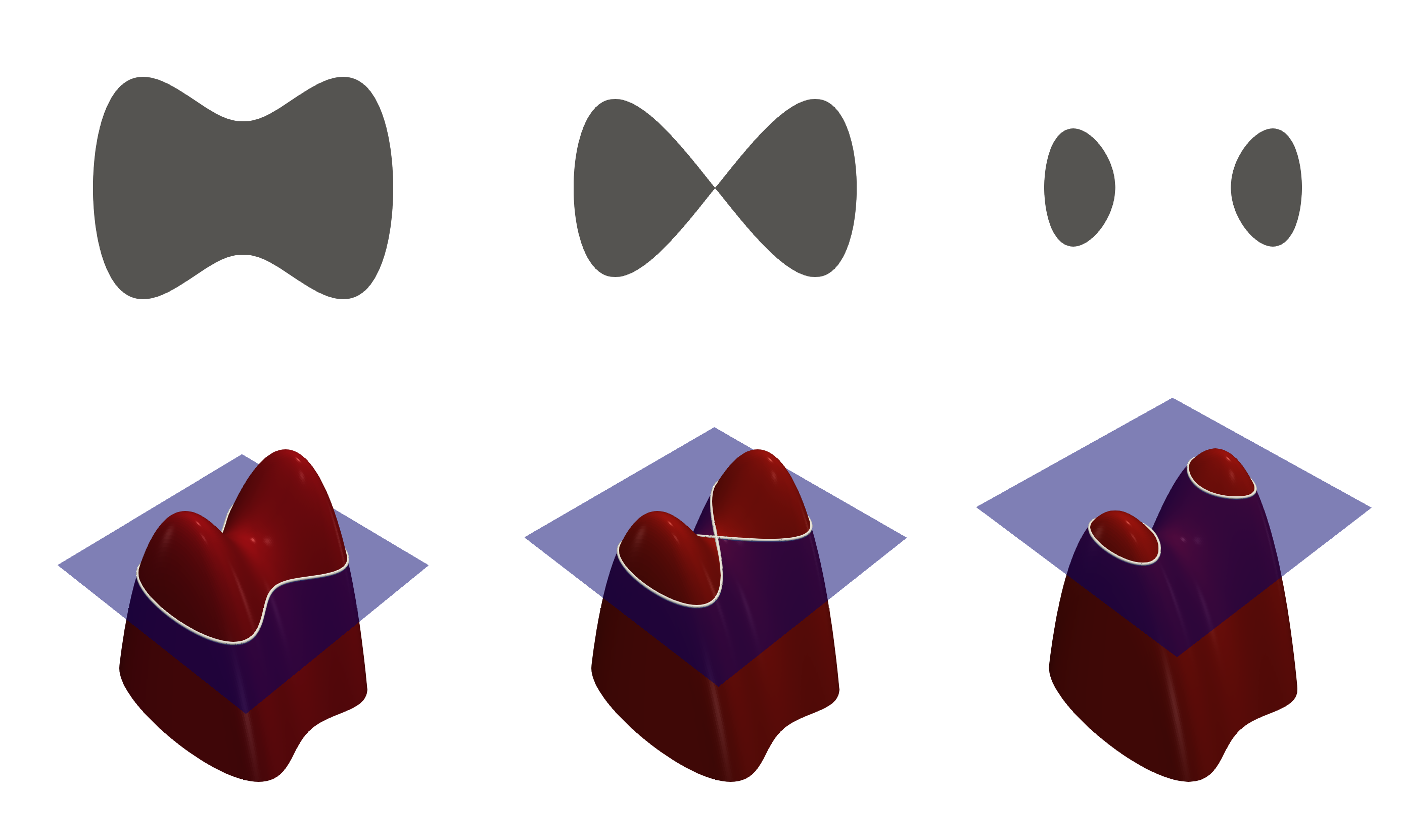Co-authored-by: Damien Guillotin <damguillotin@gmail.com> Co-authored-by: pejour <pejour@users.noreply.github.com>
149 lines
4.8 KiB
Markdown
149 lines
4.8 KiB
Markdown
# BE PI3D : MVS par level set
|
||
|
||
## Usefull resources
|
||
|
||
### Level set method, Wikipedia
|
||
|
||
https://en.wikipedia.org/wiki/Level-set_method
|
||
|
||

|
||
|
||
### Level set, Wikipedia
|
||
|
||
https://en.wikipedia.org/wiki/Level_set
|
||
|
||
### TP3, Stéréoscopie multi-vues (MVS)
|
||
|
||
https://moodle-n7.inp-toulouse.fr/pluginfile.php/116746/mod_resource/content/2/sujet_TP3.pdf
|
||
|
||
### Coding Adventure: Terraforming, Sebastian Lague
|
||
|
||
[](https://www.youtube.com/watch?v=vTMEdHcKgM4)
|
||
|
||
### 3D Signed Distance function (NVIDIA Research)
|
||
|
||
2022
|
||
Towaki Takikawa
|
||
Andrew Glassner
|
||
Morgan McGuire
|
||
|
||
https://tovacinni.github.io/sdf-explorer/
|
||
|
||
### A GPU Implementation of Level Set Multiview Stereo
|
||
|
||
2006
|
||
Patrick Labatut
|
||
Renaud Keriven
|
||
Jean-Philippe Pons
|
||
|
||
https://link.springer.com/chapter/10.1007/11758549_33
|
||
https://link.springer.com/content/pdf/10.1007/11758549_33.pdf?pdf=inline%20link
|
||
|
||
### Fast Level Set Multi-View Stereo on Graphics Hardware
|
||
|
||
2006
|
||
Patrick Labatut
|
||
Renaud Keriven
|
||
Jean-Philippe Pons
|
||
|
||
https://ieeexplore.ieee.org/document/4155801
|
||
https://sci-hub.hkvisa.net/10.1109/3dpvt.2006.62
|
||
|
||
### Model-based multiview stereo via level sets with statistical shape prior
|
||
|
||
2011
|
||
Moumen El-Melegy
|
||
Nagi Al-Ashwal
|
||
Aly A. Farag
|
||
|
||
https://ieeexplore.ieee.org/document/6365368
|
||
https://sci-hub.hkvisa.net/https://ieeexplore.ieee.org/document/6365368
|
||
|
||
### Équation bizarre de l'idée générale
|
||
|
||
`g(x,y)=exp(-((0.2*x)^(2)+((y^(2))/(x^(2)+0.1))))*sig(-10*x)-5*exp(-((y^(2))/((0.1*x)^(2))))*sig(10*x)`
|
||
|
||
$$g(x,y) = \exp\left(-\left(\left(0.2x\right)^2 + \left(\frac{y^2}{x^2 + 0.1}\right)\right)\right)\sigma\left(-10x\right) - 5\exp\left(-\frac{y^2}{\left(0.1x\right)^2}\right)\sigma\left(10x\right)$$
|
||
|
||
### A Level-Set Approach to 3D Reconstruction from Range Data
|
||
|
||
1998
|
||
Ross T. Whitaker
|
||
|
||
https://www.cs.utah.edu/~whitaker/sceneRecon/papers/sparse_report.pdf
|
||
https://link.springer.com/article/10.1023/A:1008036829907
|
||
https://link.springer.com/content/pdf/10.1023/A:1008036829907.pdf?pdf=button
|
||
|
||
### Level Set Methods in Computer Vision (Slides)
|
||
|
||
2006
|
||
Daniel Cremers
|
||
Department of Computer Science
|
||
University of Bonn
|
||
|
||
https://www.csd.uwo.ca/~yboykov/Presentations/ECCV06_tutorial_partII_dan.pdf
|
||
|
||
On part d'un solide qu'on rogne en soustrayant les valeurs obtenues avec les gaussiennes => jusqu'à obtenir le solide étudié.
|
||
|
||
### Variational principles, surface evolution, PDEs, level set methods, and the stereo problem
|
||
|
||
1996/1998
|
||
Olivier Faugeras
|
||
Renaud Keriven
|
||
|
||
https://hal.inria.fr/inria-00073673/document
|
||
https://ieeexplore.ieee.org/document/661183
|
||
|
||
### Multi-View Stereo: A Tutorial
|
||
|
||
2015
|
||
Yasutaka Furukawa
|
||
Carlos Hernández
|
||
|
||
https://carlos-hernandez.org/papers/fnt_mvs_2015.pdf
|
||
|
||
### amy-tabb/tabb-level-set-segmentation
|
||
|
||
https://github.com/amy-tabb/tabb-level-set-segmentation
|
||
|
||
### Ramesh-X/Level-Set
|
||
|
||
https://github.com/Ramesh-X/Level-Set
|
||
|
||
### 3D Image Reconstruction and Level Set Methods
|
||
|
||
Introduction and derivation of the level set methods.
|
||
|
||
https://scholarsarchive.byu.edu/cgi/viewcontent.cgi?article=3811&context=etd
|
||
|
||
# Les bons tuyaux de Lilian
|
||
|
||
Voici les références pour le groupe de BE de Laurant, des références pour lesquelles la reconstruction 3D sont les zeros d'un level set (entre parenthèses : la nature de la fonction dont les paramètres sont optimisés) :
|
||
- IDR (fonction de distance signée) : Multiview Neural Surface Reconstruction by Disentangling Geometry and Appearance
|
||
- Neus (fonction de distance signée) : NeuS: Learning Neural Implicit Surfaces by Volume Rendering for Multi-view Reconstruction
|
||
- Unisurf (fonction d'occupation, terme traduit de l'anglais occupancy) : UNISURF, Unifying Neural Implicit Surfaces and Radiance Fields for Multi-View Reconstruction
|
||
- VolSDF (fonction de distance signée) : Volume rendering of neural implicit surfaces
|
||
|
||
Les quatre méthodes font du rendu dit surfacique, les trois dernières (Neus, Unisurf and VolSDF) étant "hybrides", à savoir utilisant du rendu surfacique et volumique.
|
||
|
||
N'hésitez pas à nous demander plus d'informations si besoin.
|
||
|
||
Une autre référence avec un mélange de MVS et de PS qui considère le niveau d'incertitude des deux méthodes respectivement pour utiliser en chaque pixel le résultat le plus fiable (level set et equation eikonale dans leur fonction de cout) :
|
||
https://openaccess.thecvf.com/content/CVPR2022/html/Kaya_Uncertainty-Aware_Deep_Multi-View_Photometric_Stereo_CVPR_2022_paper.html
|
||
|
||
Un autre article à lire :
|
||
|
||
https://hal.inria.fr/inria-00266287/file/GargalloPradosSturm-iccv2007.pdf
|
||
|
||
|
||
# Note
|
||
|
||
Eviter papier de BOYKOV CREMERS
|
||
|
||
# A demander
|
||
|
||
Quel estla différence avec la méthode vu en TP ?
|
||
- On calcule le MVS comme d'hab
|
||
-> Carte de profondeur par image
|
||
- Pas de projection en nuage de points dense
|
||
-> Utilisation de la carte de prof pour modifier le level set initiale ? |